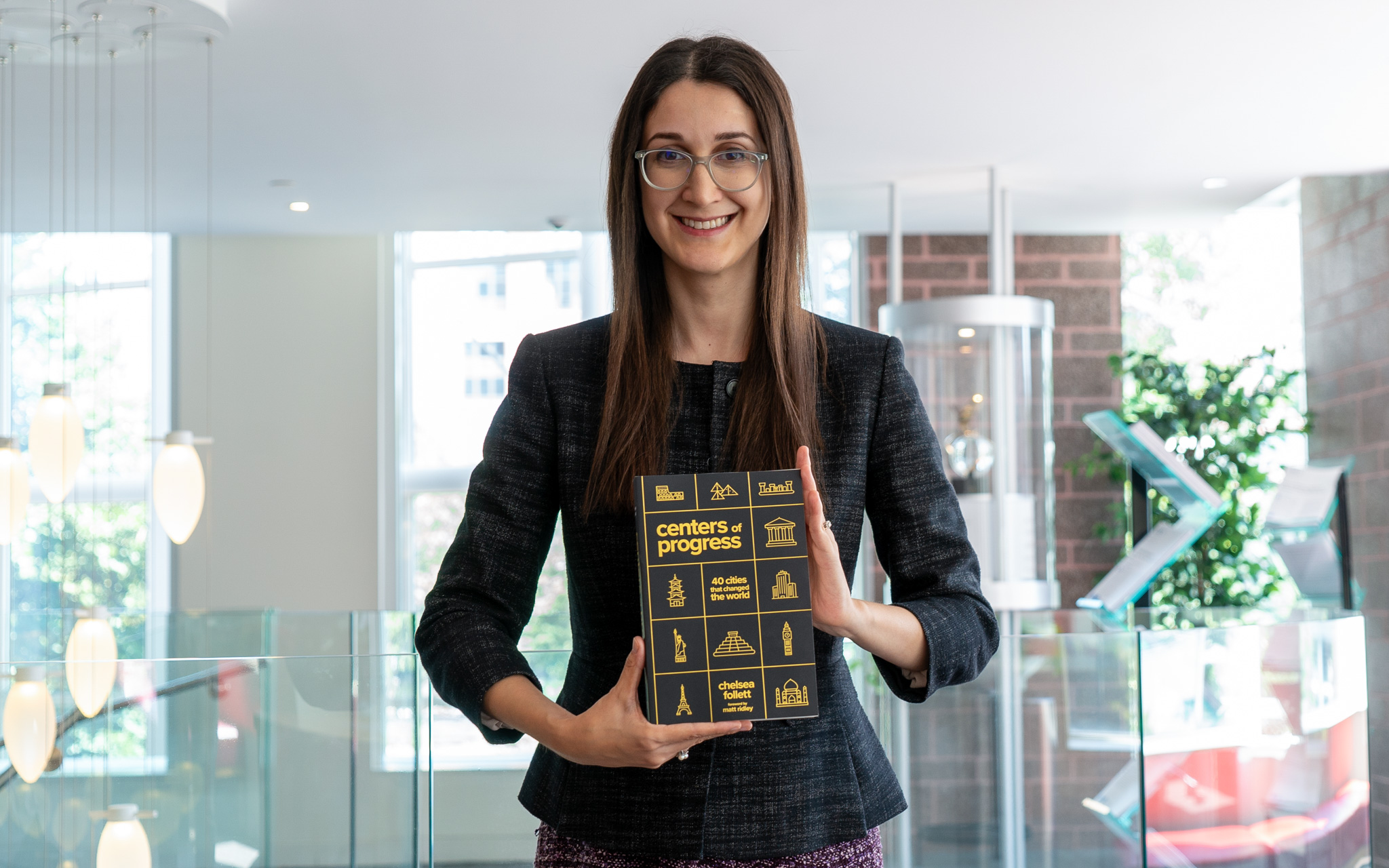“Cities, the dense agglomerations that dot the globe, have been engines of innovation since Plato and Socrates bickered in an Athenian marketplace,” as urban economist Edward Glaeser explains in his book The Triumph of the City.
Athens’s storied breakthroughs in philosophy are but one example of how cities have often been the sites of pivotal advances throughout history. Kyoto gave us the novel. Bologna gave us the university. Florence gave us the Renaissance. Paris gave us the Enlightenment. Manchester gave us the Industrial Revolution. Los Angeles gave us cinema. Postwar New York gave us modern finance . . . the list goes on. As Glaeser also notes, “Wandering these cities—whether down cobblestone sidewalks or grid-cutting cross streets, around roundabouts or under freeways—is to study nothing less than human progress.”
If you’re not able to travel to each of these extraordinary cities, perhaps the next best thing is to embark on a virtual tour from the comfort of your home. To that end, I wrote a book surveying 40 of history’s greatest urban centers, showcasing each city at a moment in time when it notably contributed to progress.
Centers of Progress: 40 Cities That Changed the World offers a fact-filled yet accessible crash course in global urban history, spanning from the agricultural revolution to the digital revolution. This book affirms the importance of cities to the story of human progress and innovation by shining a spotlight on some of the places that have helped create the modern world.
The book’s chapters can guide you through the Library of Alexandria, the stock exchange of Dutch Golden Age-era Amsterdam, and the pubs of Edinburgh during the Scottish Enlightenment, all in an afternoon.
Centers of Progress “takes the reader on a time-travel cruise through the great flash points of human activity to catch innovations that have transformed human lives” at their moment of invention, according to writer Matt Ridley in the insightful foreword that he kindly provided. Come explore Agra as the Taj Mahal was erected and Cambridge as Isaac Newton penned the Principia. Meet engineers in Ancient Rome, Silk Road merchants in Tang Dynasty Chang’an, music composers in 19th-century Vienna, and Space Age flight controllers in Houston.
Learning about past achievements may even hold the secret to fostering innovation in the present.
As I note in the book, “Although there are some exceptions, most cities reach their creative peak during periods of peace. Most centers of progress also thrive during times of relative social, intellectual, and economic freedom, as well as openness to intercultural exchange and trade. And centers of progress tend to be highly populated. . . . Identifying those common denominators among the places that have produced history’s greatest achievements is one way to learn what causes progress in the first place. After all, change is a constant, but progress is not.”
From the fall of the Berlin Wall to Hong Kong’s transformation from a war-ravaged “barren island” into a prosperous metropolis, many of the stories featured in Centers of Progress hold valuable lessons about the importance of ideas, people, and freedom. I hope that you will consider joining me on a journey through the book’s pages to some of history’s greatest centers of progress.

